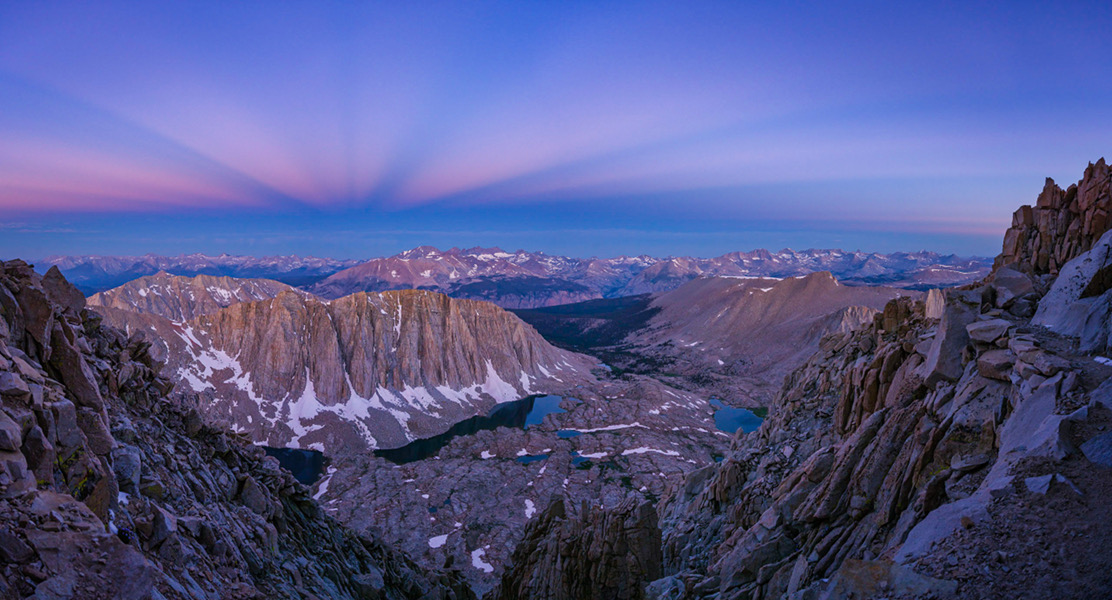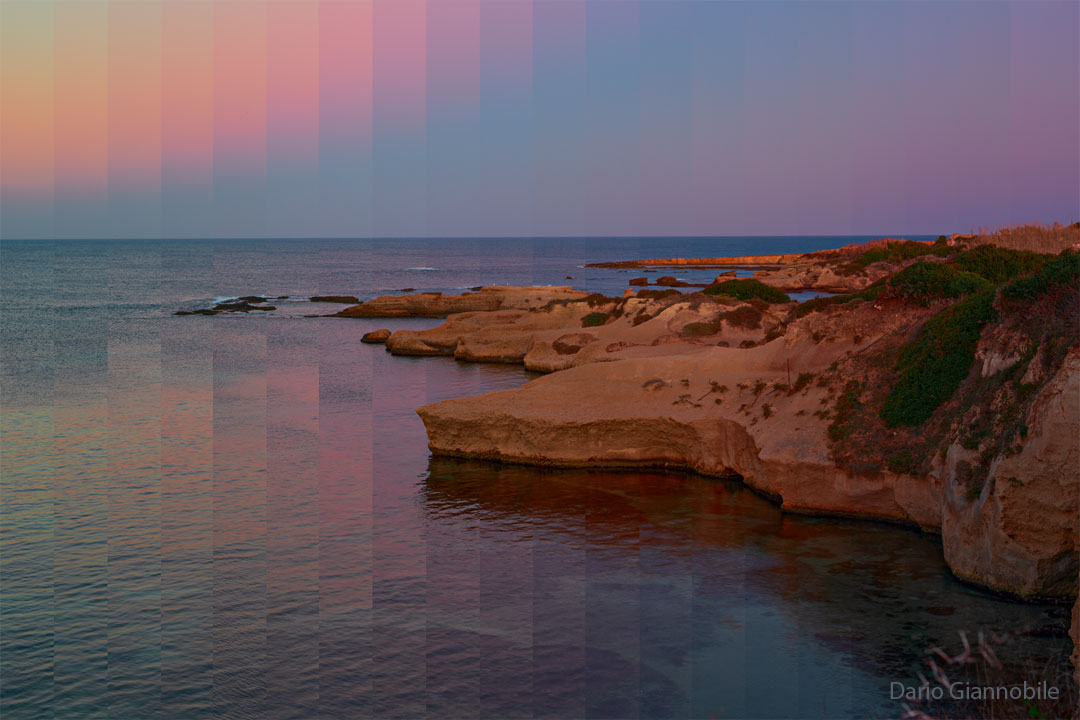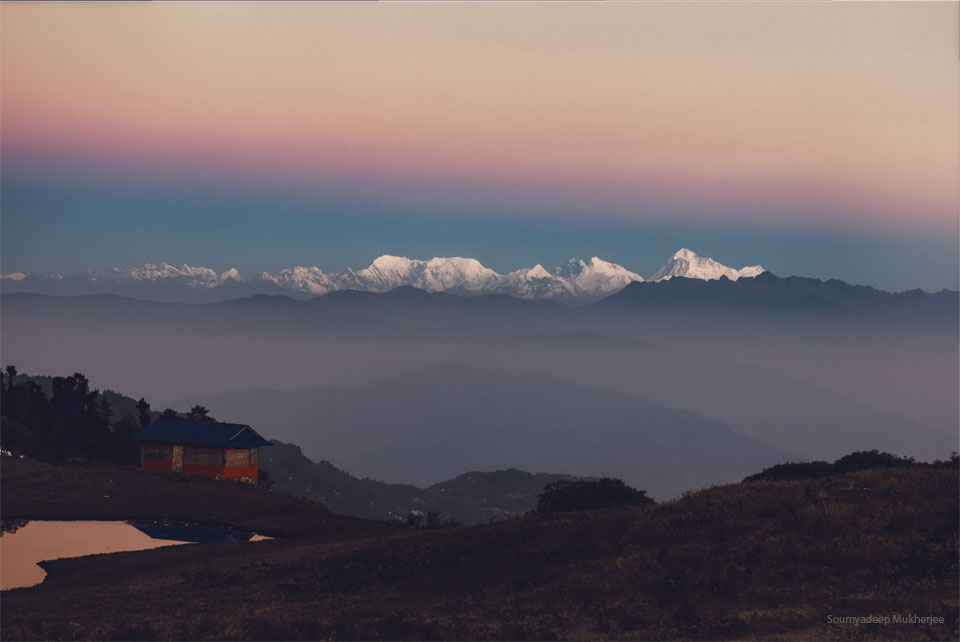2019 October 11
Planet Earth at Blue Hour
Image Credit & Copyright: Matthias Ciprian
Explanation: Nature photographers and other fans of planet Earth always look forward to the blue hour. That’s the transition in twilight, just before sunrise or after sunset, when the Sun is below the horizon but land and sky are still suffused with beautiful bluish hues of light. On August 8 this early morning blue hour panorama scanned along the clear western sky, away from the impending sunrise. A breathtaking scene, it looks down the slopes of Mt. Whitney, from along the John Muir Trail toward rugged peaks of planet Earth’s Sierra Nevada mountain range. Above the horizon a faint pinkish band of back scattered sunlight, the anti-twilight arch or Belt of Venus, borders the falling grey shadow of Earth itself. Subtle bands of light across the clear sky are anti-crepuscular rays, defined by shadows of clouds near the sunward horizon. Actually following parallel lines they seem to converge along the horizon at the point opposite the rising Sun due to perspective.
地球的蓝色时刻
影像来源与版权: Matthias Ciprian
说明:自然摄影师和其他摄影爱好者总是期待着地球蓝色时刻的到来。那是黄昏的过渡,发生在日出之前或日落之后、太阳位于地平线下方时,但陆地和天空仍然弥漫着美丽的蓝色光芒。这幅拍摄于8月8日清晨的地球蓝色时刻全景影像呈现了日出之前的晴朗西方天空。这是一幅震撼的影像:从惠特尼山的山坡向下俯瞰,沿着约翰.缪尔径一直延伸到内华达山脉的崎岖山顶。地平线上方反向散射的淡粉色光带是反辉光弧或金星带,与地球本身下落的灰色阴影相邻。而晴朗天空中的几束微弱光带是反曙暮辉,以向阳地平线附近的云层阴影为界。实际上,由于视角的原因,这些平行光线似乎沿着地平线、在与初升太阳相对的一点汇聚。




Pingback: 珠穆朗玛峰上空的金星带 – NASA中文
Pingback: 地球的影子 – NASA中文